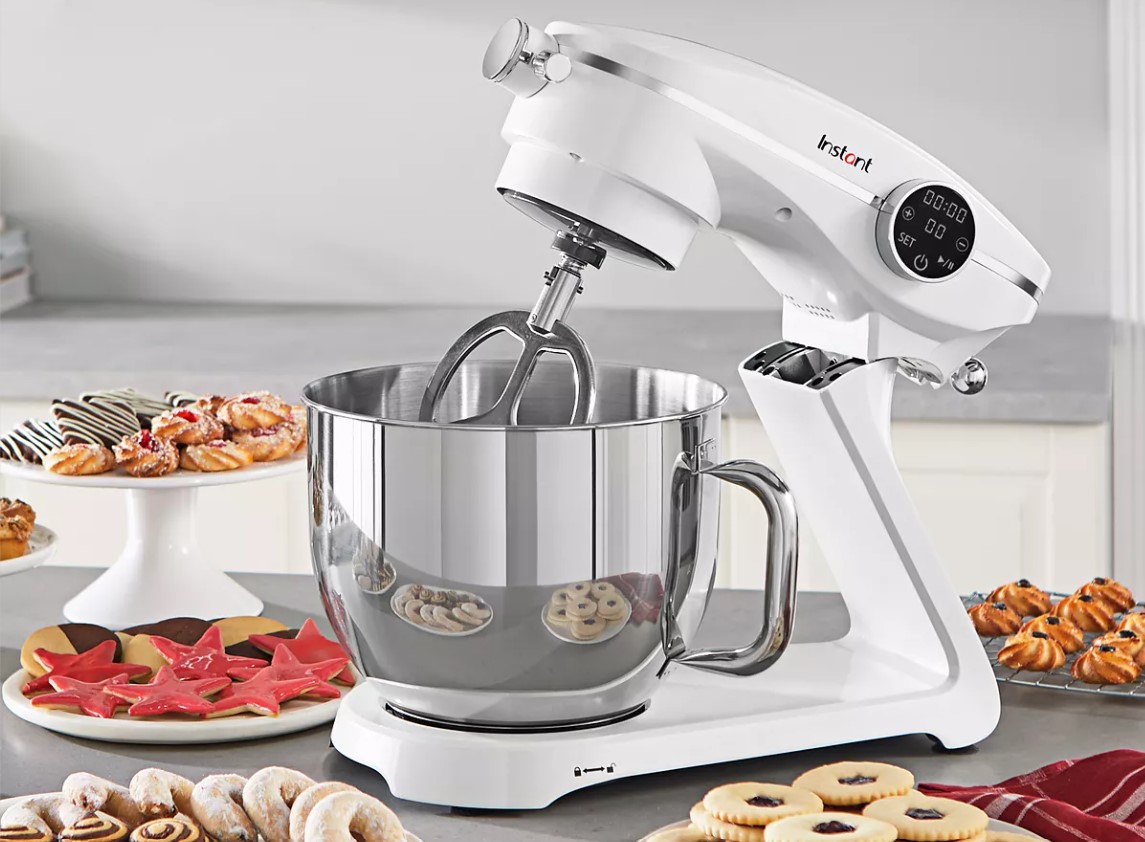
A stand mixer is a must-have for any home baker, as these appliances make it faster and easier to mix cookie dough, whip up meringue, knead homemade dough, and much more. KitchenAid stand mixers are widely regarded as the gold standard of baking tools, known for their quality construction, attractive design, and durability, but the new Instant Stand Mixer Pro could give the legacy brand a run for its money.
This new stand mixer, which comes from the makers of the cult-favorite Instant Pot, has a sleek design that will look right at home in any modern kitchen. It boasts a heavy-duty die-cast metal housing and an oversized 7.4-quart mixing bowl, and the whole thing is powered by a handy digital control panel. The design certainly looks innovative, but we wanted to know if it can compete with the best stand mixers, so we put the appliance to the test.
I used the Instant Stand Mixer Pro over the course of several weeks, testing its ability to make cookies, bread, and more of my favorite baked goods. While I did discover a few design quirks with the mixer, I was impressed with its overall power and modern features.
Instant Stand Mixer Pro Specifications
Instant Stand Mixer Pro Unboxing
The Instant Stand Mixer Pro came in a large, well-packaged box, and the appliance was cushioned by cardboard forms, as well as a layer of thin foam to prevent scratches. As I took it out of the box, I was quite surprised to find that it’s fairly lightweight for its size. I was able to carry it to the kitchen easily, despite the fact that it’s a large appliance.
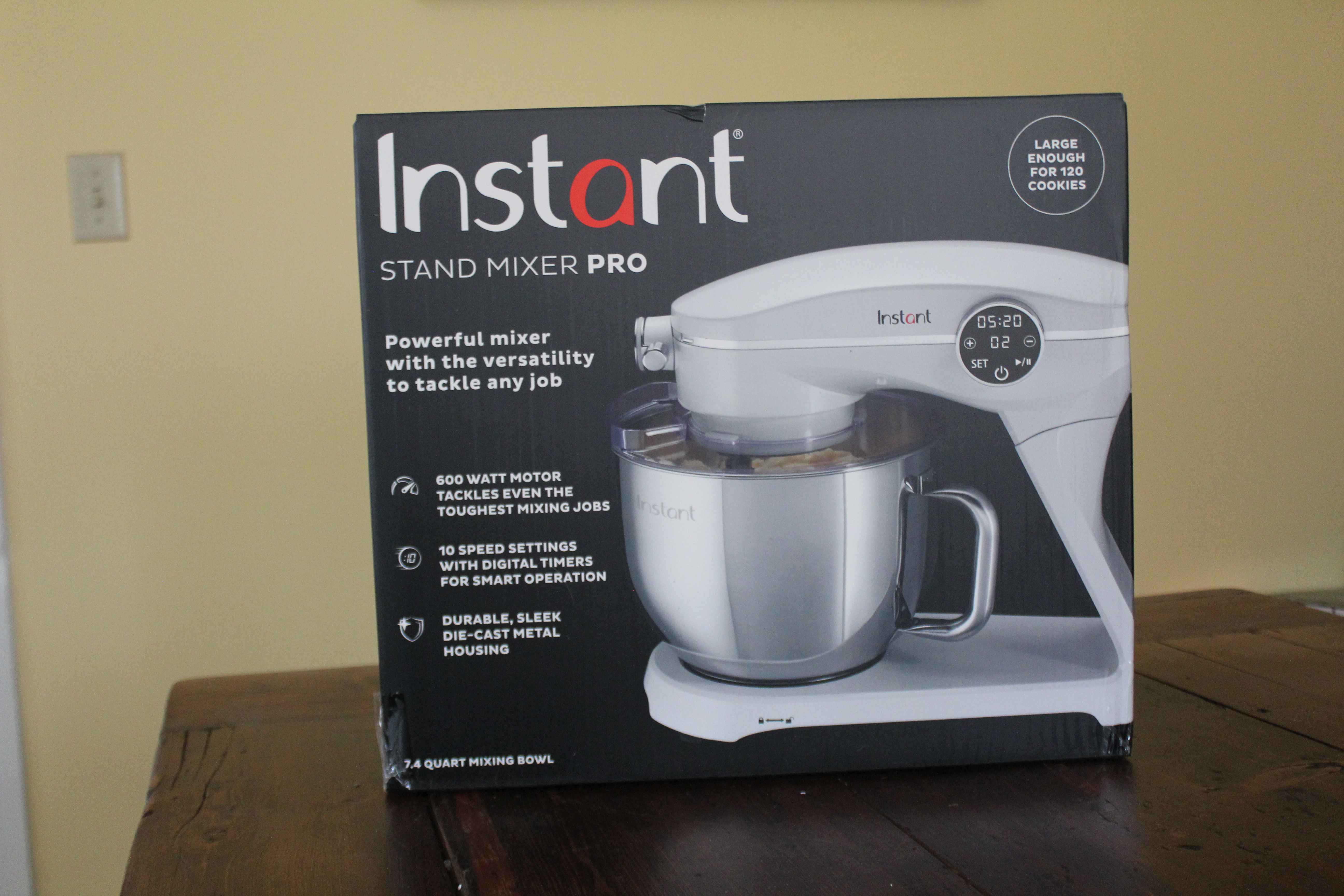
In terms of design, the Instant Stand Mixer Pro has a more contemporary form than my KitchenAid Artisan Stand Mixer, which I’ve owned for several years. Its stand has an angular design, where the KitchenAid is more rounded. The Instant Mixer has a shiny white finish with stainless steel accents and a large stainless steel bowl, and as of right now, this is the only color available.
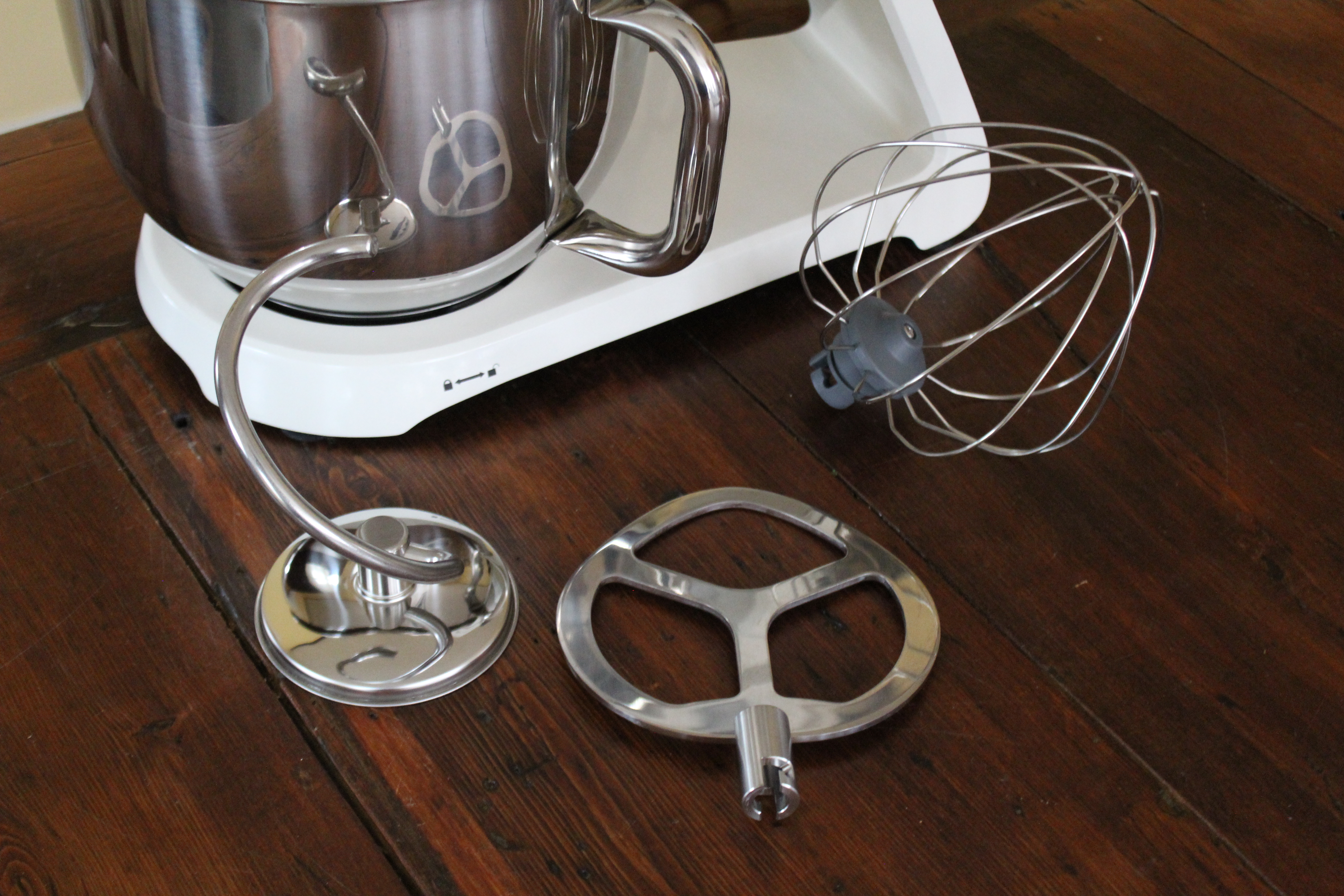
There are suction cups on the bottom of the mixer that help keep it in place on the counter, and similar to a KitchenAid, there’s a motorized hub at the front of the device where you can use additional attachments. The mixer has a circular control panel toward the back of the head, and the touchscreen design has a blinking power button that you simply tap to turn on the appliance.
Testing Peanut Butter Oatmeal Cookies
The first recipe I made with the Instant Stand Mixer Pro was peanut butter oatmeal cookies. Because it was the first time using the mixer instead of my KitchenAid, it took a little adjustment to get used to. One of the biggest differences is that the digital control panel on the Instant Mixer is located on the right side, toward the back of the unit. To make the controls easy to see, I ended up orientating the mixer sideways on the counter. This also made the head release knob, which is on the back of the mixer, easier to reach.
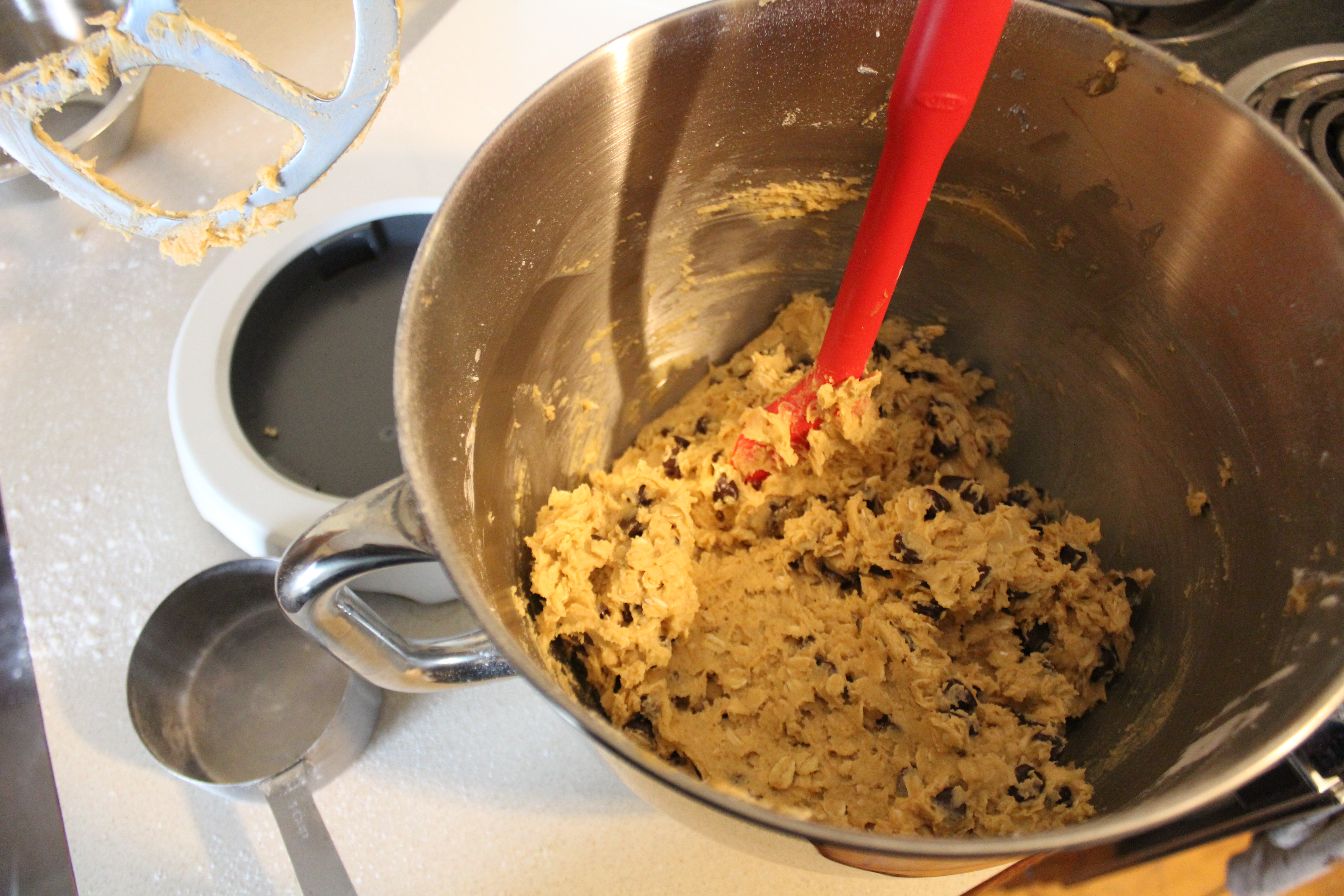
The first step in the recipe was creaming two sticks of softened butter, which I did in the mixer using the stainless steel paddle attachment. Using the control panel, I set the mixer to speed 6—there are 10 speed settings in total—and pressed start. However, because the paddle doesn’t touch the sides of the bowl, it ended up smushing a lot of the butter against the walls, where it wasn’t able to scrape it back off. I ended up having to stop and scrape down the walls of the mixing bowl by hand with a rubber spatula several times.
Next, I added in the sugar, eggs, and peanut butter, mixing to combine the ingredients. Again, I had to stop and scrape down the sides of the bowl three times, as ingredients were getting stuck out of reach of the paddle. My KitchenAid mixer is much better in this regard, as its paddle has rubber sides that wipe down the bowl with each turn.
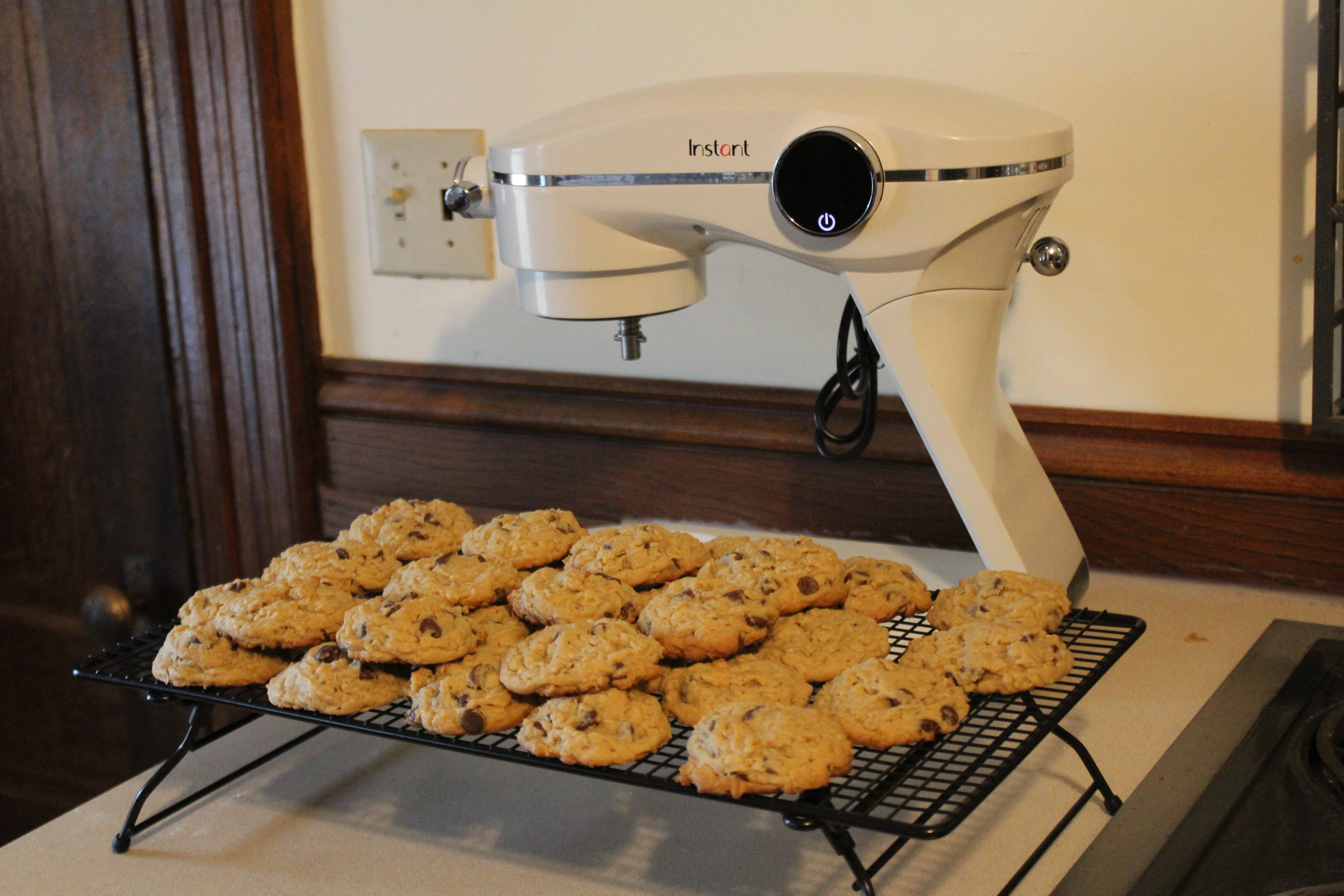
Finally, I added in the dry ingredients, including flour and oatmeal. The mixer had no problem mixing up all the ingredients on medium speed, and while I thought this was a fairly large recipe, it didn’t even fill up half the mixing bowl. I could easily double it and still have room to spare.
Testing Macarons
I wanted to test out all the different attachments for the mixer, so the next recipe I made was French macarons. Because this recipe requires a meringue, it was the perfect opportunity to test out the whisk attachment. Unlike the other two tools, the whisk has a plastic base, making it very lightweight.
I started this recipe by whipping the egg whites on a slower speed, and the mixer’s built-in timer came in handy here. I programmed it to mix for 2 minutes, and after the timer counted down, it automatically stopped. This was really convenient, as it allowed me to get other ingredients ready without worrying about monitoring the mixer. (If you don’t set the timer to count down, it will count up instead, so it still offers an idea of how much time has passed.)
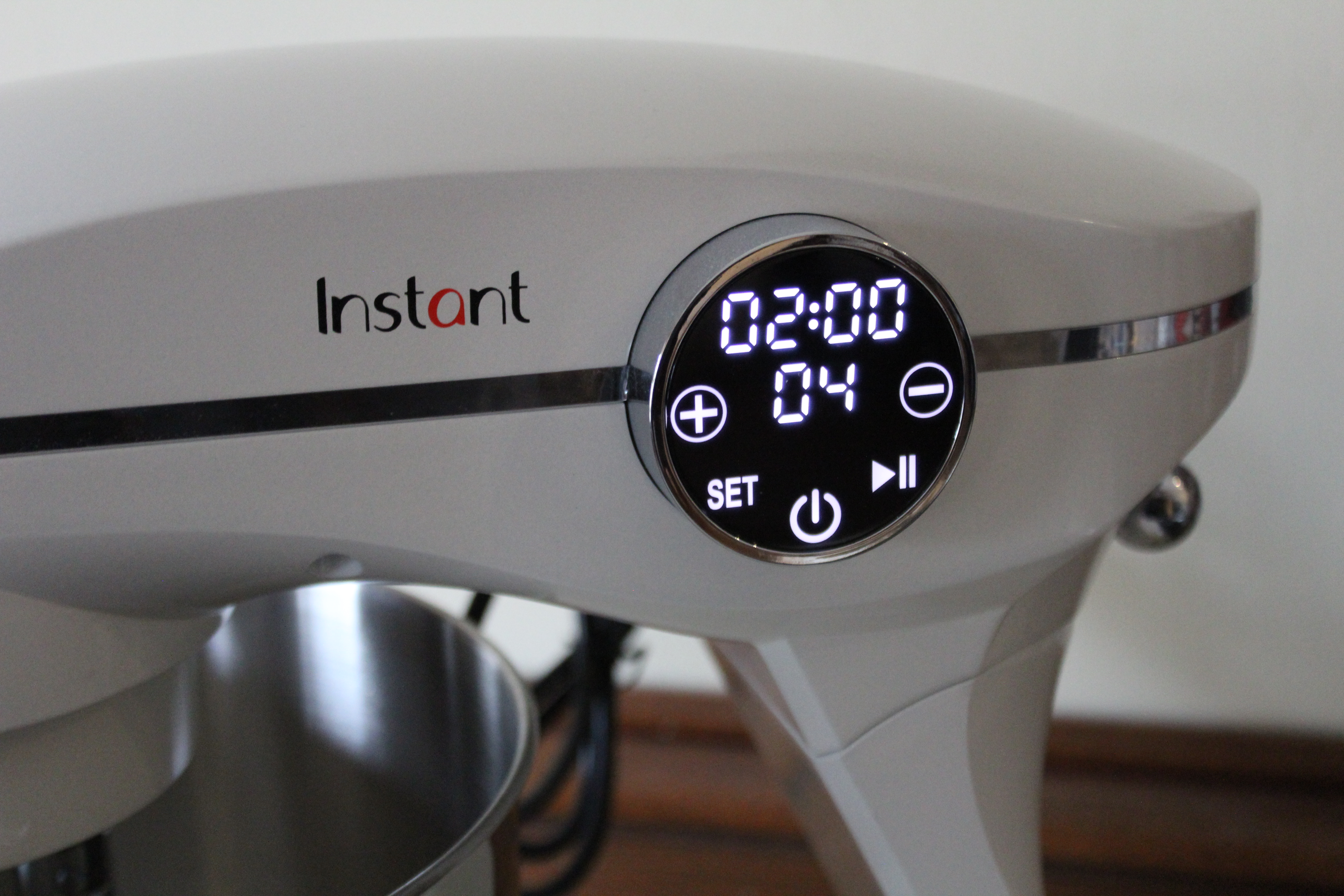
Once the egg whites were frothy, I turned up the mixer speed to high—which is easy to do thanks to its touchscreen controls—and slowly added in the sugar. I let the mixer whip the ingredients together for several minutes, and I was impressed by the machine’s power at high speed. My meringue came together beautifully, and soon it had the stiff peaks needed for the recipe.
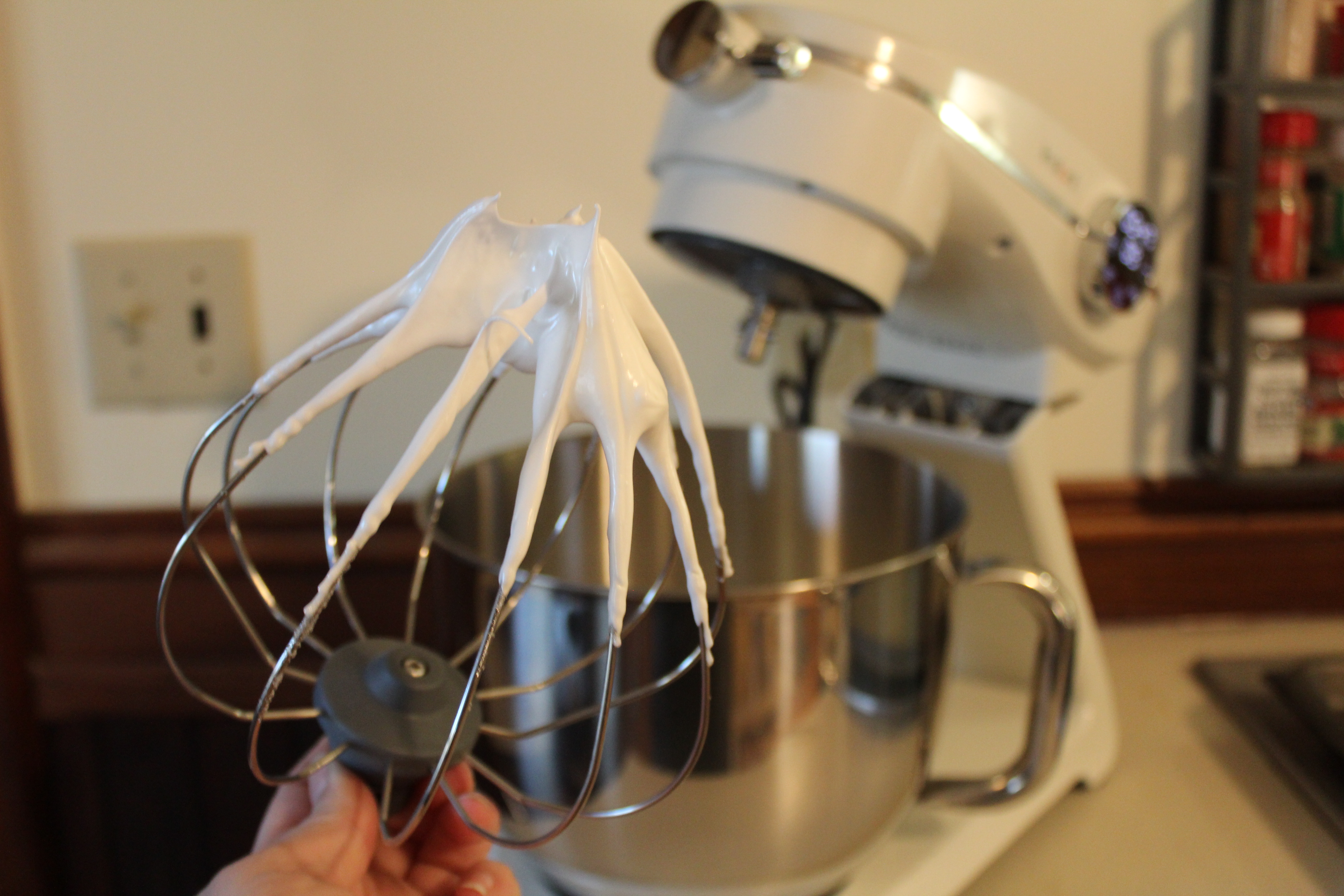
After I had finished making the meringue, I tilted the mixer head back to remove the bowl, and I left it that way as I finished making the macaron batter. As I was mixing the dry ingredients into the meringue, I kept hearing this faint beeping noise—it sounded like an alarm was going off in the basement of my house. I went looking for the source of the noise, walking all around my home, only to return to the kitchen and discover that the mixer was actually the culprit. The sound is so faint that you wouldn’t hear it if you had music playing, but in a quiet room, it’s just enough to be bothersome. Thankfully, the beeping stopped when I locked the mixer head back into place.
I also used the stand mixer to make buttercream frosting for the center of the macarons, and because I made a small batch of cookies, I only needed half a traditional buttercream recipe. This task required the paddle attachment, and because I was only using a small amount of each ingredient, I had to stop and scrape the bowl frequently to ensure the frosting was properly mixed. This proves that the mixer isn’t great for small batches.
Testing breadsticks
Finally, I made a batch of homemade breadsticks to test the Instant Stand Mixer’s dough hook. I used the stainless steel attachment for the whole process, and it worked extremely well. The hook did a good job stirring the wet ingredients initially—I only had to scrape sides once—and as I added in the flour, it mixed the dough together quickly.
Once the dough was mixed, the recipe said to let the mixer knead it for 8 to 10 minutes, and I loved that I was able to simply set the timer to 8 minutes and let the mixer take over. I stayed in the kitchen to monitor while it worked, and I did notice that the appliance migrated several inches across the counter as it was working—despite the suction cups that are supposed to keep it in place. Overall, the dough came out perfectly, and I loved that I barely had to do any work thanks to the stand mixer.
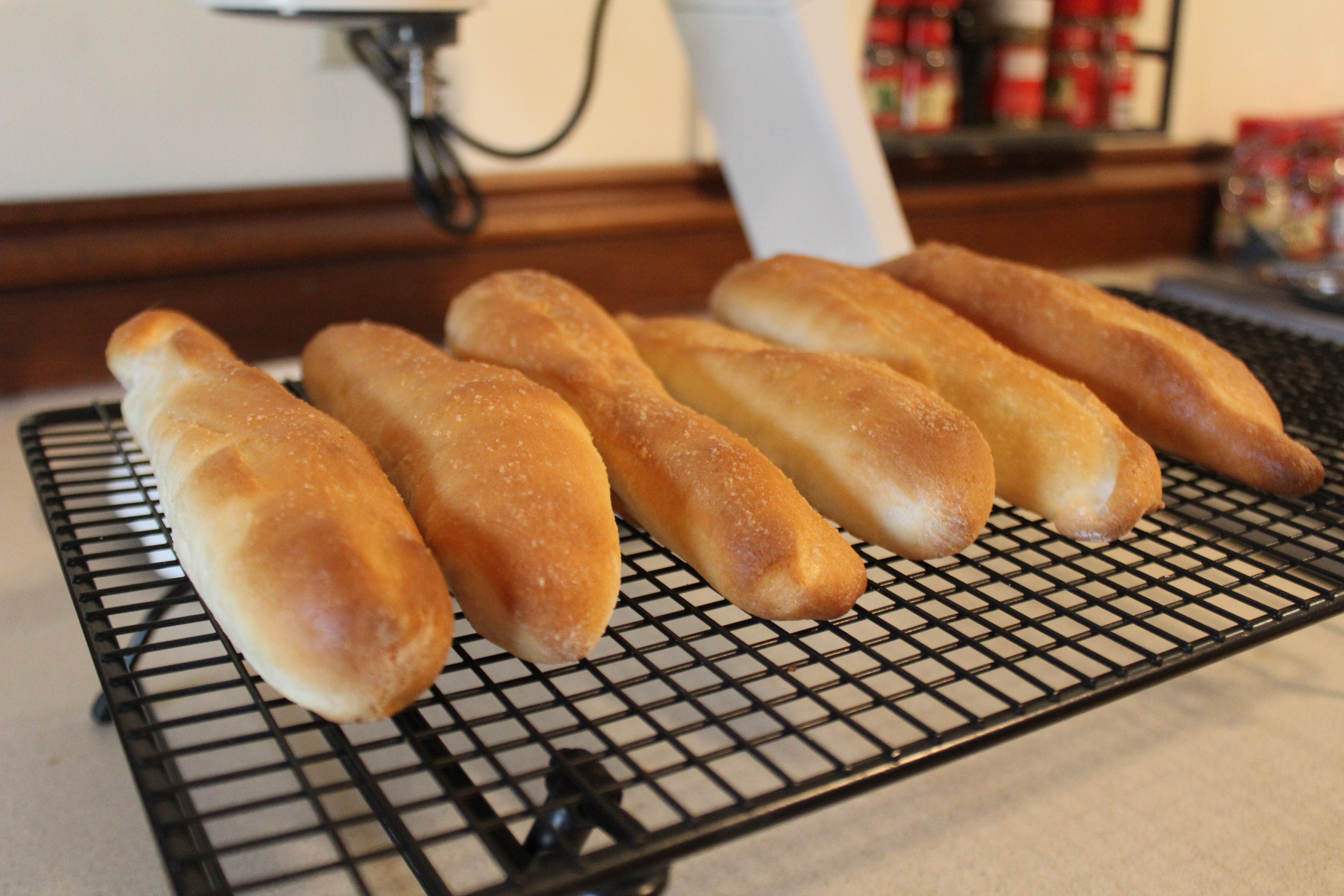
Cleaning the Instant Stand Mixer Pro
One of the best aspects of the Instant Stand Mixer Pro is that all of its removable components are dishwasher-safe. The mixing bowl and three attachments can all be put in the dishwasher, making clean-up extremely quick and easy. Just keep in mind that the mixing bowl is quite large, so you’ll need a full-size dishwasher to accommodate it.
While I was cleaning up after each recipe, I generally needed to wipe down the base of the mixer, as flour and other dry ingredients sometimes spilled over the top of the bowl. However, it wasn’t until the very end of testing that I realized the mixer also comes with a pouring shield, which prevents this mess from happening. The clear shield was attached to one of the cardboard packaging pieces, and I never noticed it while I was unboxing the appliance. This piece will definitely come in handy for future recipes, and I’m glad I re-read the product description and realized it was included.
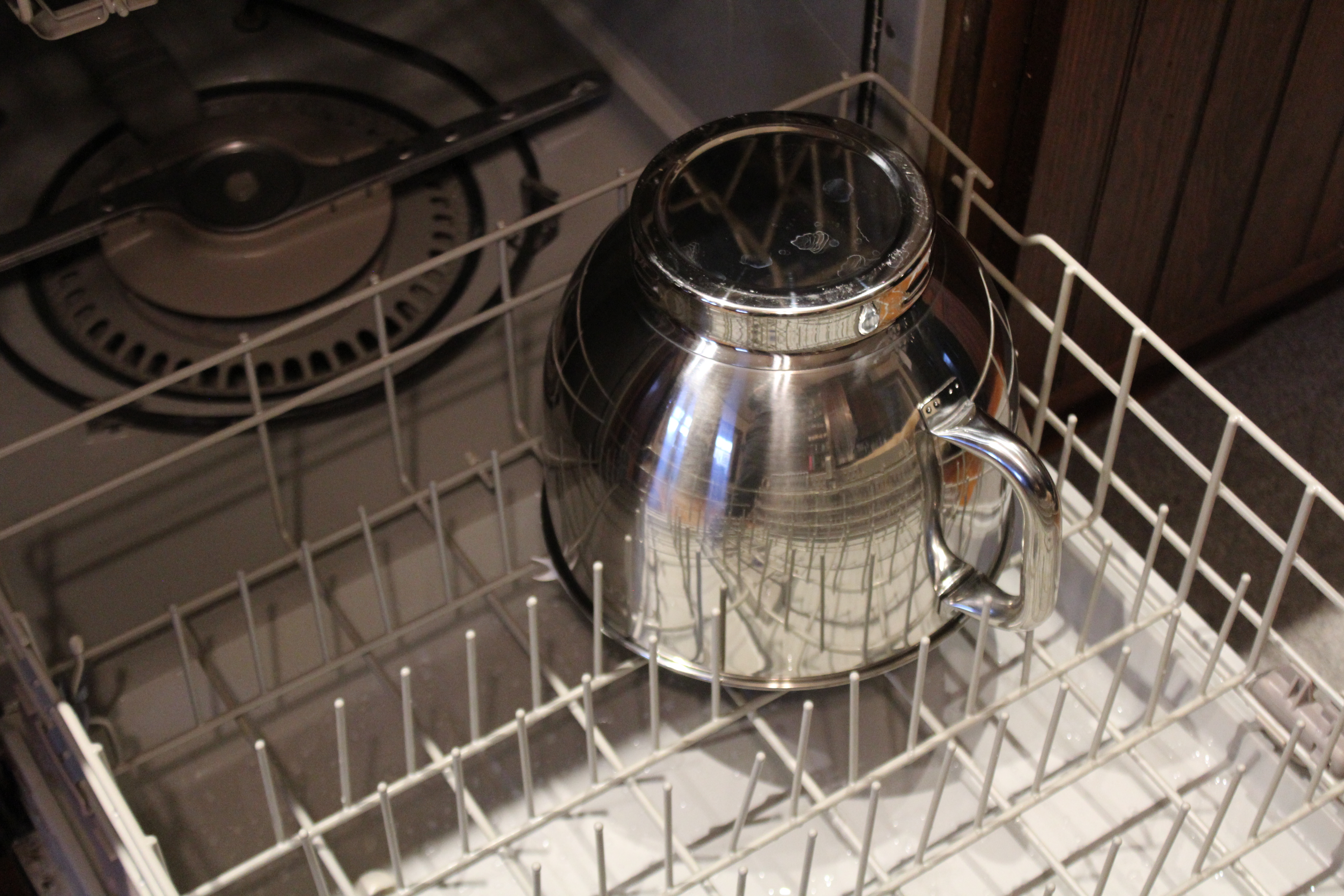
Should you buy Instant Stand Mixer Pro?
The Instant Stand Mixer Pro retails for $300, which is around $150 cheaper than the KitchenAid Artisan. While the Instant model doesn’t come in the same range of colors as a KitchenAid, there are a few reasons you might choose it over the legacy brand.
One of the biggest benefits of the Instant Stand Mixer Pro is its oversized 7.4-quart mixing bowl—by comparison, the KitchenAid Artisan has a 4.5-quart bowl. It’s ideal for making large batches of baked goods, and as an added bonus, both the bowl and all the attachments are dishwasher safe. The other main selling point of the Instant Mixer is its modern design, which has a contemporary form and handy digital control panel, complete with a built-in timer.
However, if you’re someone who frequently whips up small batches in your stand mixer, the Instant Stand Mixer Pro probably isn’t the best option for you. Its large bowl and paddle design don’t fare well with small quantities, and you’ll find yourself scraping the bowl manually in order to get your ingredients mixed uniformly.






